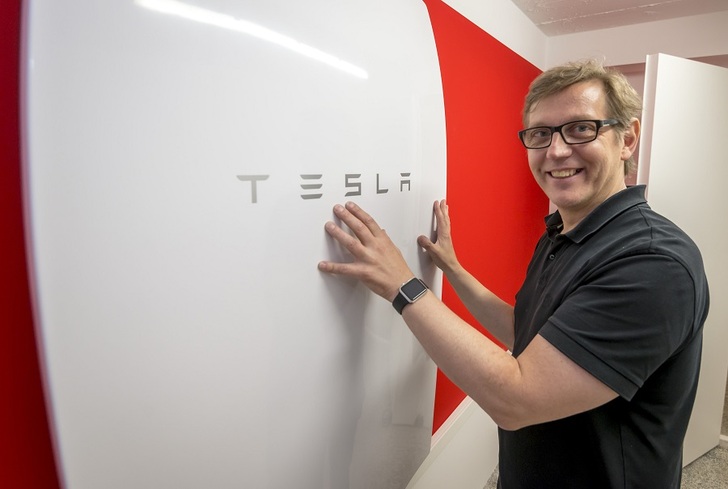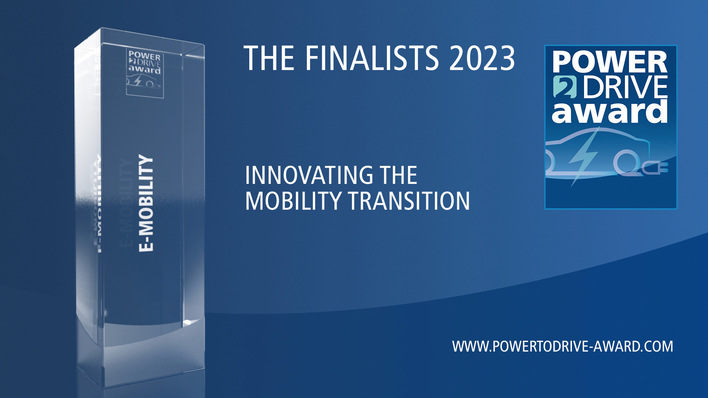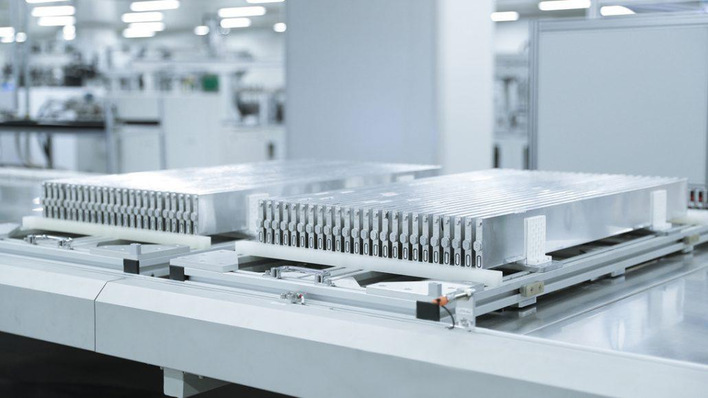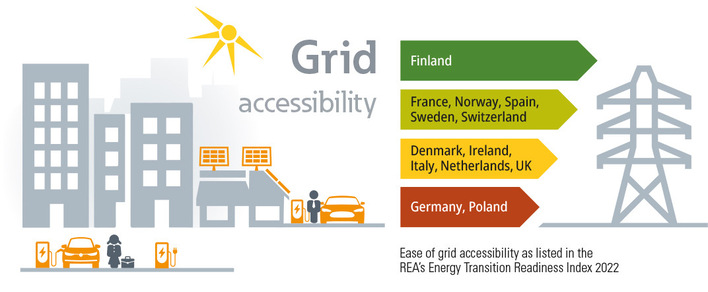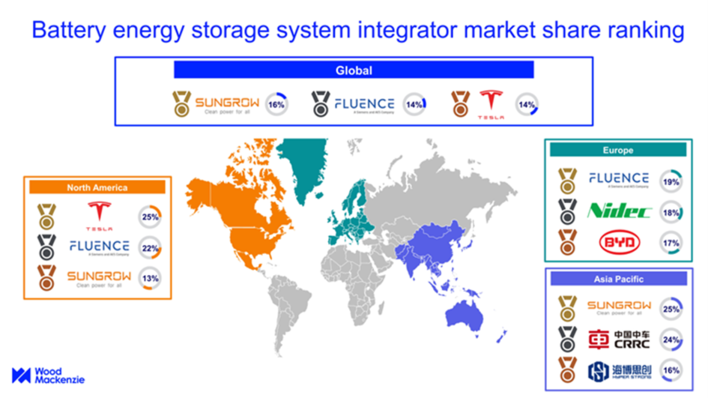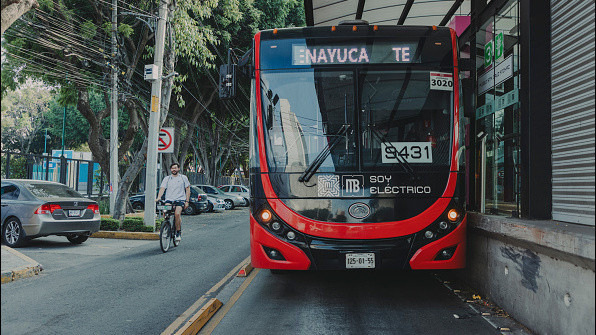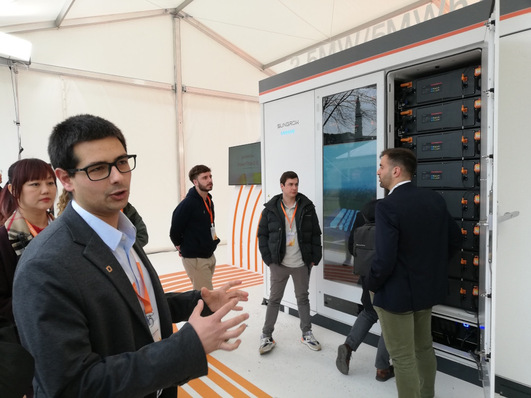The former supermarket in Mainz-Gonsenheim, Germany, had been left empty for 13 years. There was no shortage of ideas about what to do with the site. Developers came up with a range of proposals, including demolishing the old shop and replacing it with an amusement arcade. When the architect Alexander Maier first set eyes on the flat roof building dating from 1968 in this popular and upmarket area, he immediately thought "this would be the perfect location for our office". Ten years after this first encounter he had secured permission for a change of use from retail to office/residential, so he could get on with the refurbishment. His architectural practice Zeit + Raum took up residence in the refurbished supermarket in the summer of 2016. The three apartments he also created were let immediately. You cannot see it from the outside, but the building, which was left structurally unchanged, is a textbook example of energy renovation and sustainable energy supply. The photovoltaic system with 76 Panasonic HIT solar modules, invisible from ground level, work with battery storage to deliver a high level of energy self-sufficiency for the office.
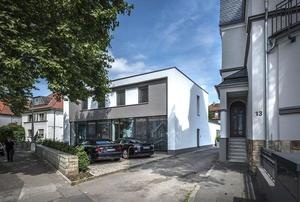
Invisible energy production
Alexander Maier is from a family of architects, and is the third generation to plan and construct buildings. His office specialises in architecture, real estate and facilities. Modern technology is his particular hobby horse, so he obviously wanted to try out some new ideas in the new building. "I have a horror of outdated, traditional thinking," says the 53-year-old, adding that "now that it's possible for buildings to generate electricity, we should get on and do it." From his point of view, e-mobility is also a natural part of this. The concrete goals were established early in the planning process. First, Maier wanted to leave the building pretty much unchanged. Next, he wanted to build to a KfW standard without mechanical ventilation. And he wanted the building to generate more electricity than his office uses. There was a catch: everything had to be hidden from view. "Invisible energy production," says the architect with a smile.
Insulation first
The individual steps are as follows. To achieve the "KfW Efficiency House 85" standard, the building shell had to be extremely well insulated. The floor was given a new finish and fitted with 16 cm insulating boards. 16 cm insulation was also added to the walls, with 30 cm mineral wool insulation for the roof. The triple glazed windows have a U-value of 0.9 W/(m²K). He gutted the old supermarket and drew up plans for three apartments as well as the office. Two are on the ground floor and one is above the office on the first floor. The combined residential accommodation occupies 400 square metres. The floor space of the architectural practice is about 300 square metres, with 200 on the ground floor and 100 in the basement. The goal of the energy concept was to take as little electricity as possible from the grid, instead using as much renewable energy as possible.
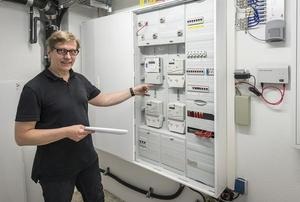
18.62 kW PV installation with HIT modules
So Maier engaged the specialist company Sonnenkönig from Nieder-Olm to install a photovoltaic system on the flat roof, using Panasonic HIT solar modules with a peak power of 18.62 kilowatt peak. The 76 modules are oriented east-west with an inclination of ten degrees. "I opted for the HIT solar mdoules because I was looking for maximum efficiency", says Maier, explaining his choice. They have a special cell technology in which a thin mono-crystalline wafer is surrounded by an ultra-thin amorphous silicon layer, making them more efficient than conventional crystalline solar modules. Hidden behind the parapet wall, they are just about visible from the other side of the street but only if you look carefully.
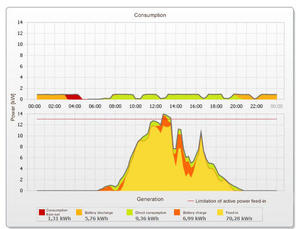
Tesla battery with 6.4 kW
The photovoltaic system was switched on in 2016 and now generates 20,000 kilowatt hours of electricity per year (kWh/a). The architectural practice consumes about 12,000 kilowatt hours. This includes full climate control, LED lighting and IT systems. That means the system produces a surplus of 8,000 kWh/a. Because Maier wanted to use as much solar power as possible, he also installed a Tesla battery with 6.4 kWh storage capacity. This combination of PV system and energy storage means that in the 12 months to May this year, he was able to use 55% of the electricity from his own roof, making him 57% self-sufficient. Direct consumption was 43%.
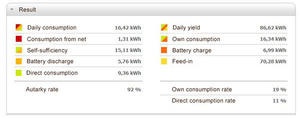
Power-to-heat and electric car
For the heating, Maier opted for a Stirling CHP with 25 kilowatt thermal power and 1 kilowatt electricity generation. The architect also installed a heat pump for heating and cooling. "I switch it on in the summer when we can use it to cool the office," he explains. That means he can use even more solar power himself in the summer months when the system is generating the most energy. Total electricity consumption is about 14,000 kWh/a because Maier also drives a Tesla electric car. Here, too, he was won over by the innovative technology designed to make combustion engines a thing of the past. He underlines his point by comparing the cost of filling up. A journey of 100 km costs just EUR 2.20 in his electric car. He would have to pay about EUR 10.40 in petrol for the same journey. He has set up two charging stations in front of the building so there is one spare for colleagues and visitors. As a fan of the latest technology, Maier has integrated smart home controls in the office. He can use them to control the LED lights, as well as music, HVAC and energy monitoring. All the controls are connected to each other in a user interface.

Expansion of rooftop PV and energy storage
So far, after a year in this new building with its sophisticated energy concept, his experience has been overwhelmingly positive. That's why Maier is eager to press on with the upgrades he has been planning all along. He wants to increase the output of the photovoltaic system to 50 kilowatt. There is enough space on the roof at the rear of the building above the two apartments. He wants to buy two more solar storage batteries to create a three phase storage capacity of 38.70 kilowatt hours. Four more charging stations are planned in addition to the two existing ones. This is because Maier is planning to convert his fleet to electric. By the end of 2018 he envisages three electric company cars. And he wants to supply heating to the building next door, which he also owns, via a district heating pipe. "The issue of energy has become a life philosophy for me," says Alexander Maier. He has managed to integrate energy production, and he's especially pleased that he's been able to do it so it is invisible. (HCN)
Read more about energy storage
More useful information:
https://www.pveurope.eu/solar-storage/solaredge-rolls-out-storedge-solution-teslas-powerwall-battery

